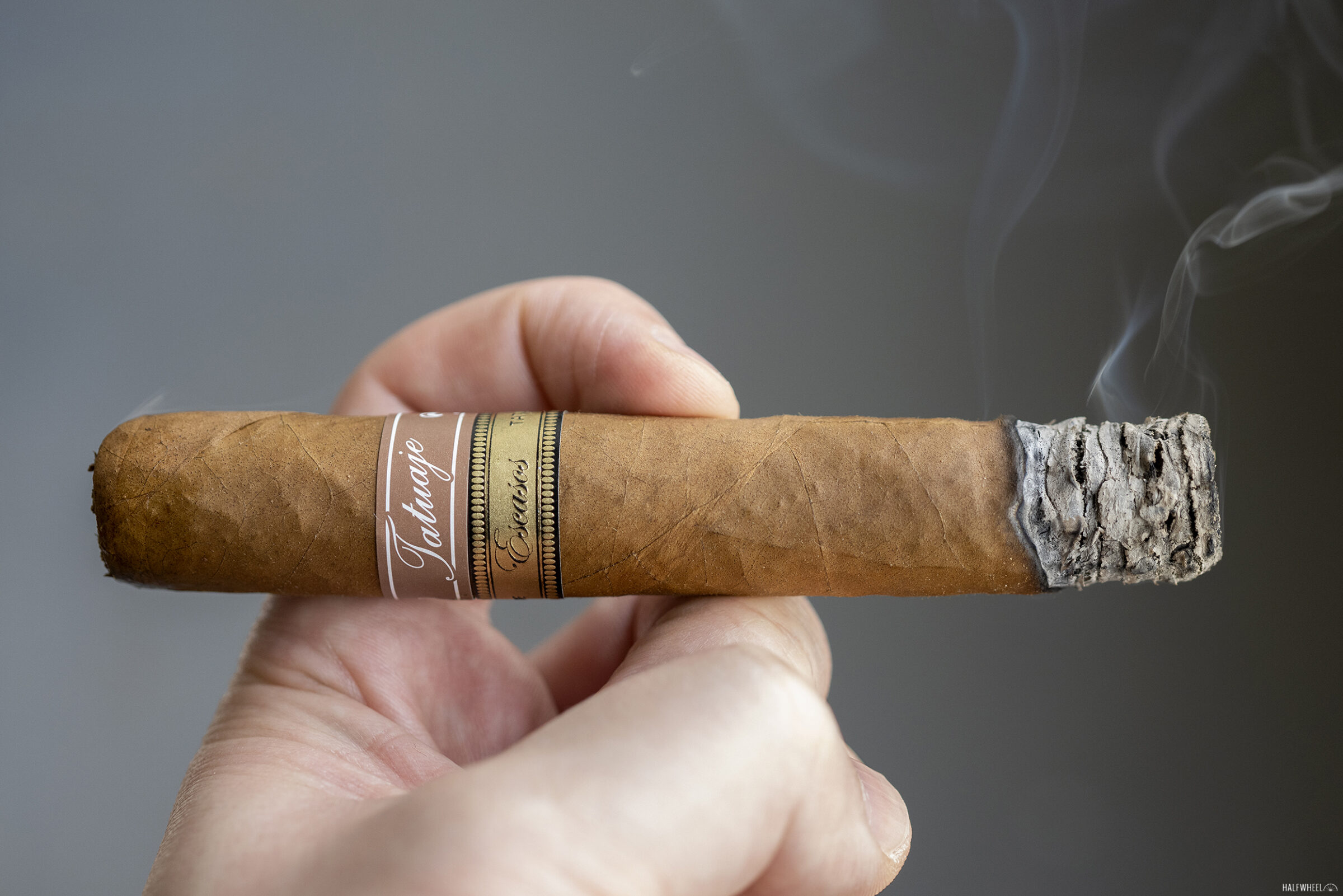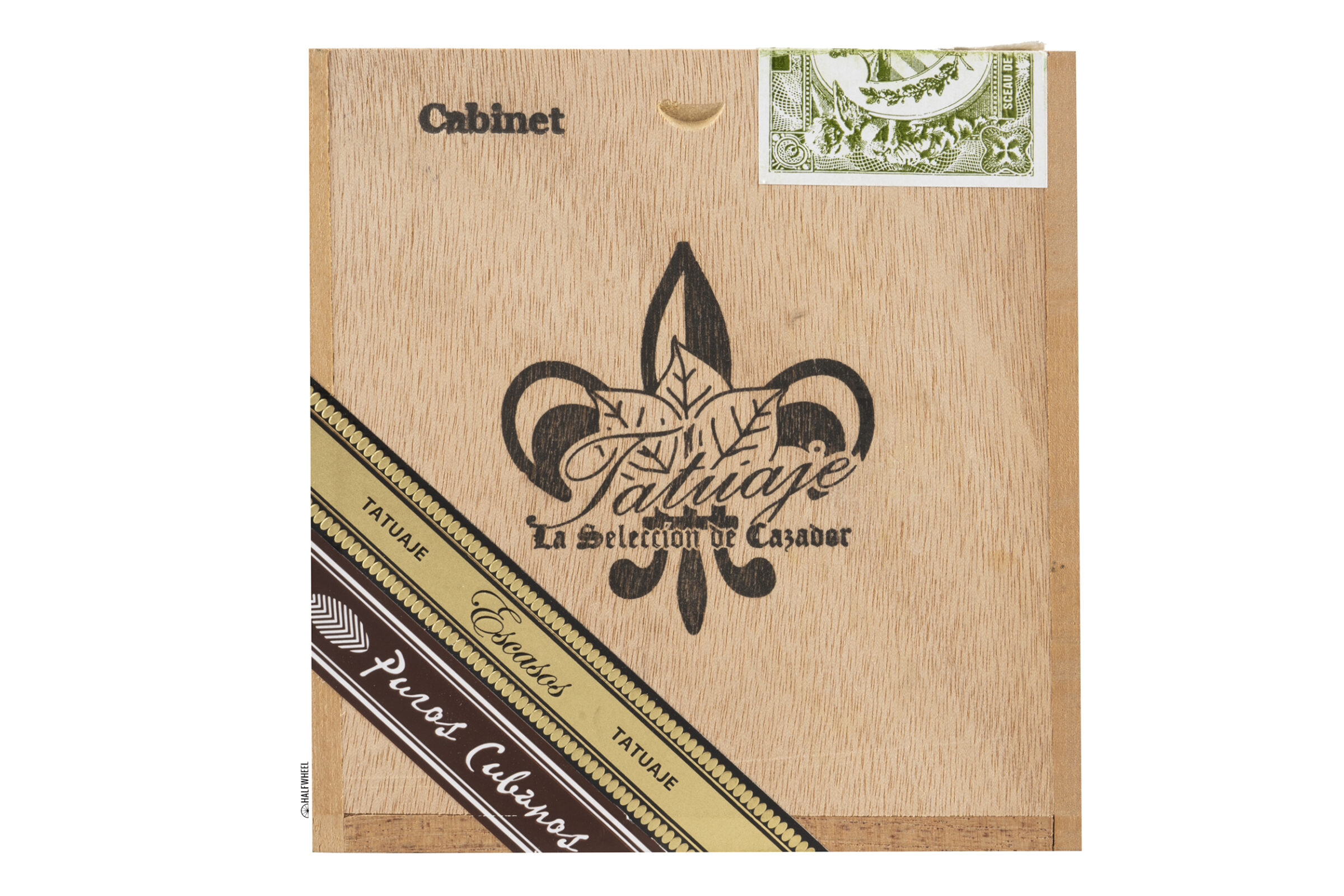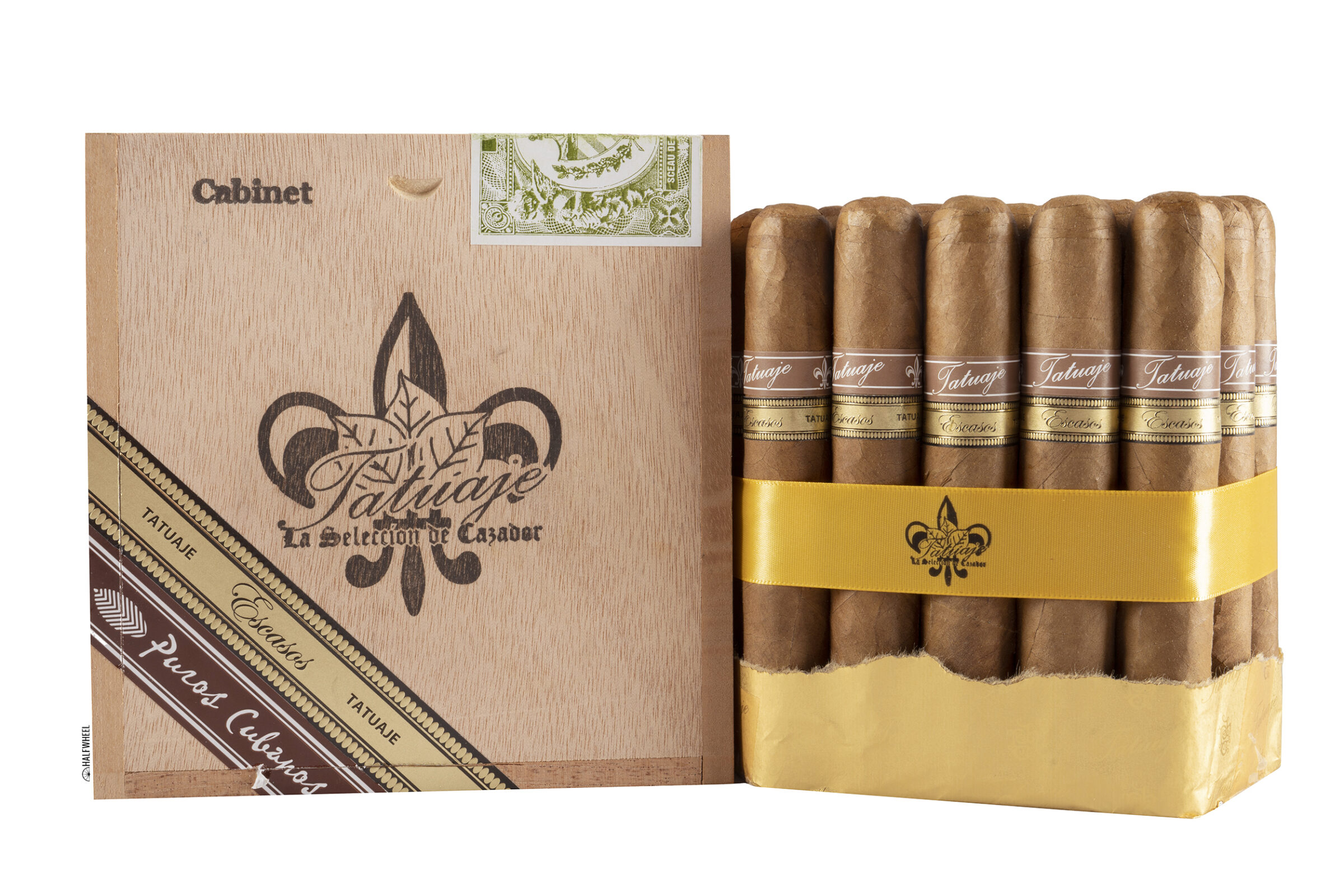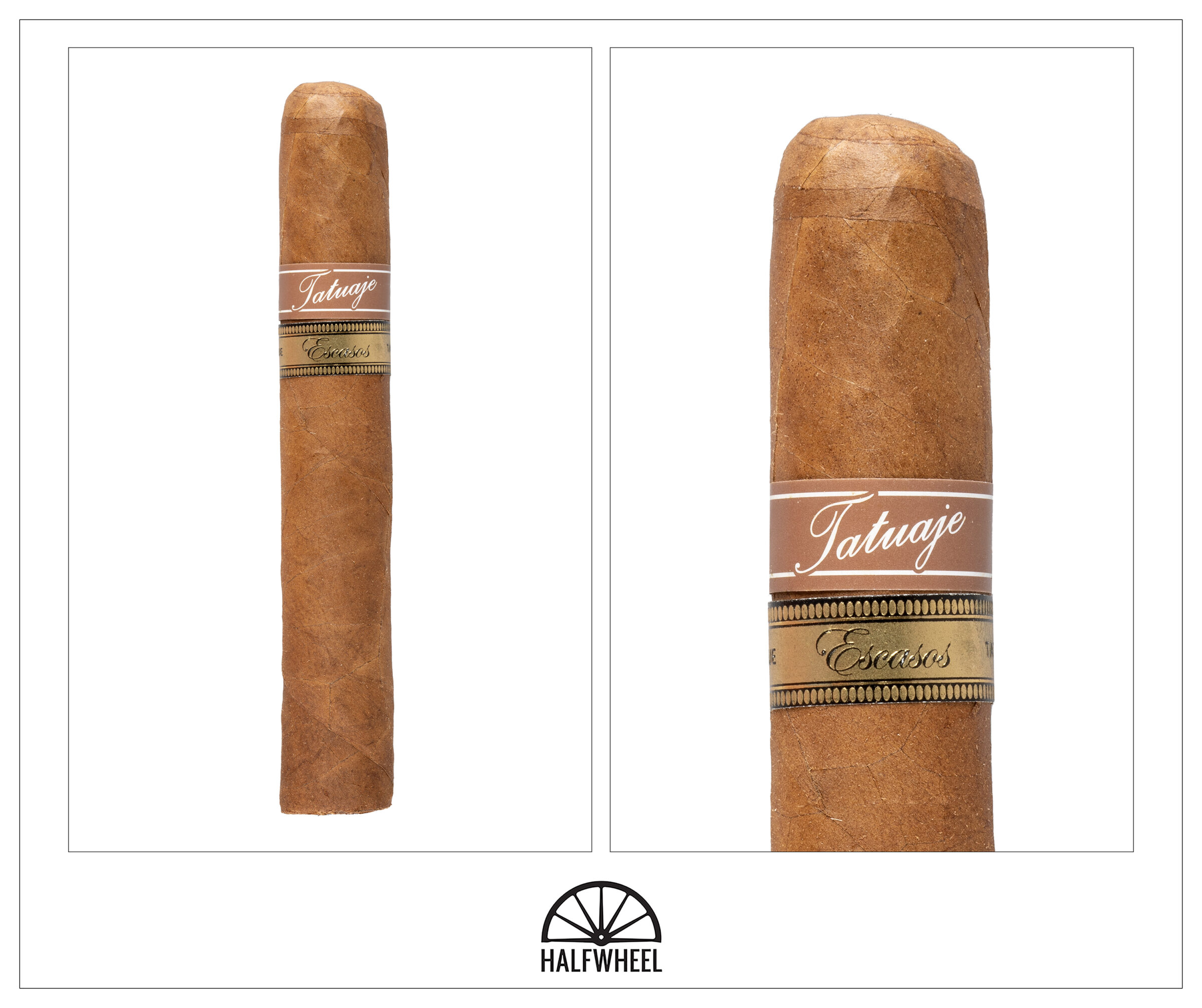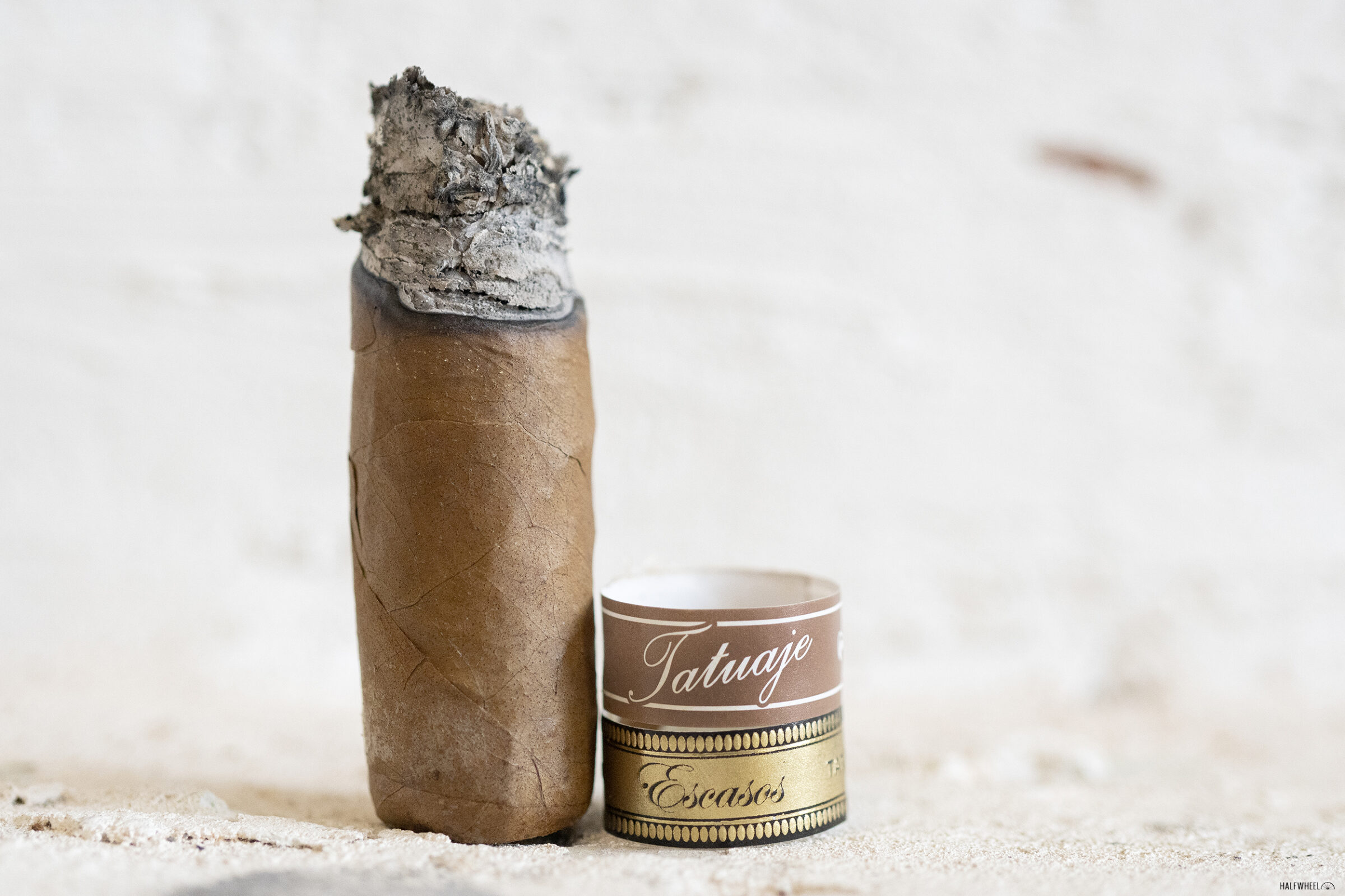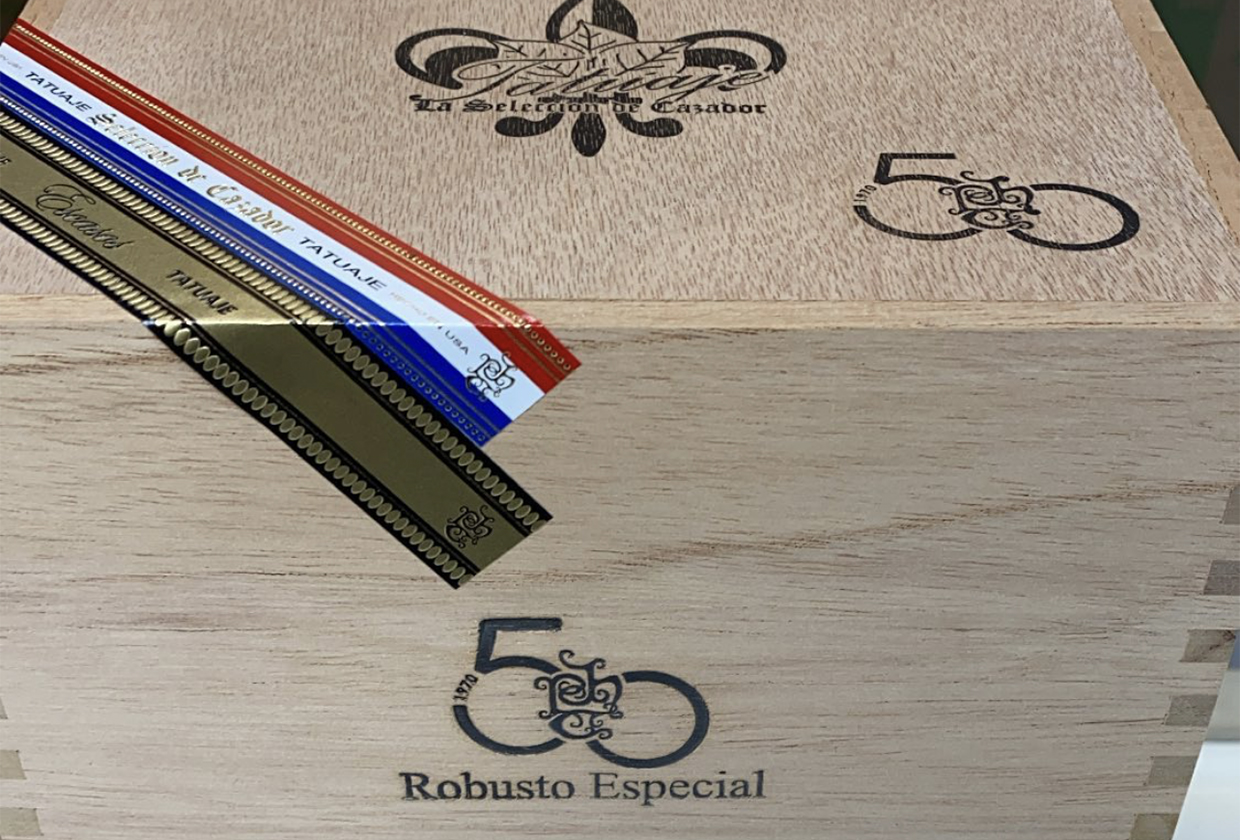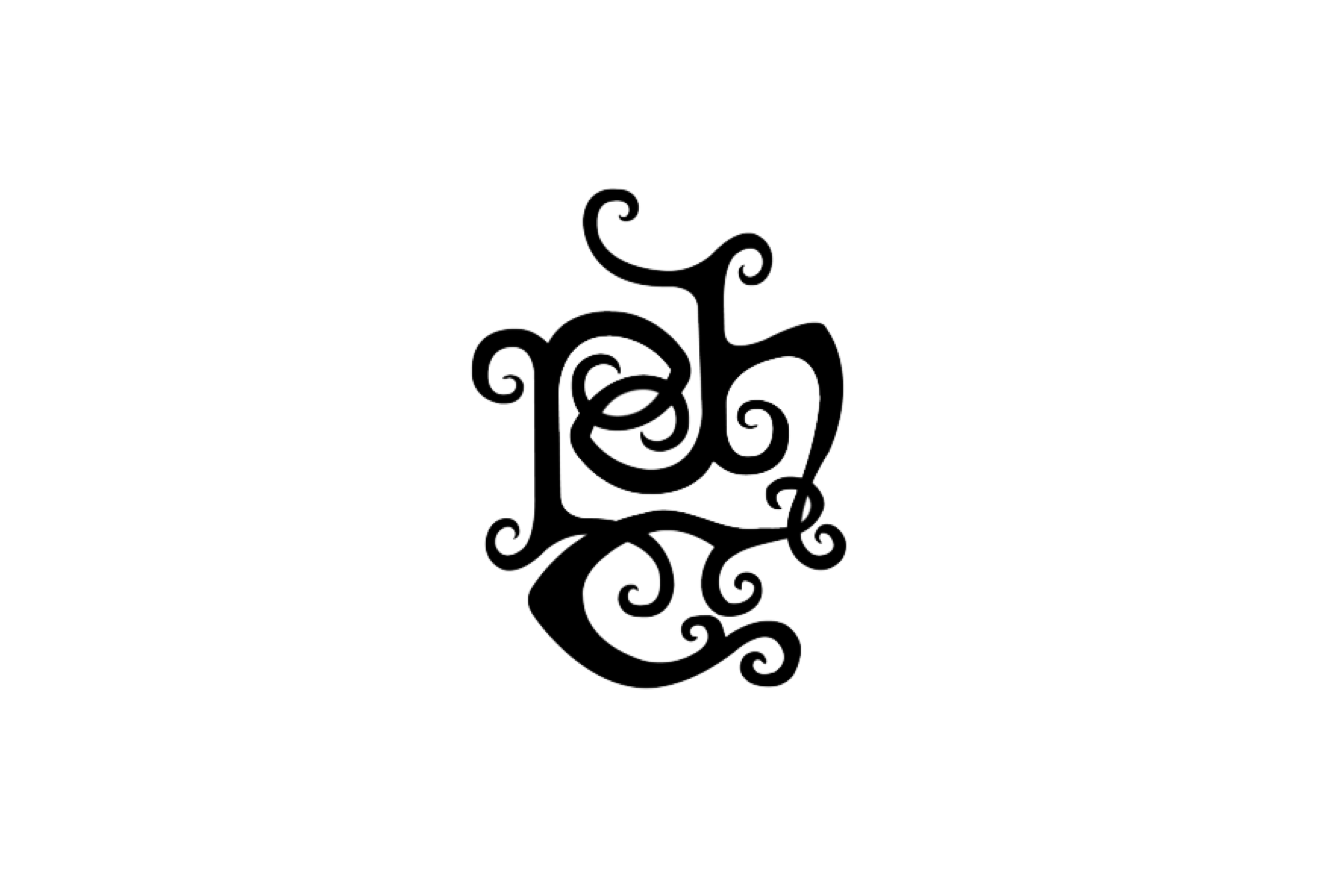Last year marked the 20th anniversary of Pete Johnson’s Tatuaje cigar brand. As cigar companies typically do, Johnson celebrated the milestone by releasing new cigars.
As far as names go, there are four explicit Tatuaje 20th Anniversary cigars. Two of them are regular production lines based on the Selección de Cazador line, i.e., the Tatuaje Brown Label:
- Tatuaje 20th Grande Merveille (6 1/8 x 46) — $13 (Box of 20, $260)
- Tatuaje 20th Grand Chasseur (6 3/8 x 54) — $14 (Box of 20, $280)
- Tatuaje 20th EL22 (5 x 50) — $18 (Box of 25, $450)
- Tatuaje 20th RL22 (5 1/2 x 42) — $16 (Box of 25, $400)
Late last year—after the Grande Mereville and Grand Chasseur had arrived on retailers’ shelves—the company added two more cigars, albeit very different cigars. The Tatuaje 20th RL22 and EL22 are different sizes and different blends, but they both fall under the company’s Escasos Collection, which is a loose series of higher-end cigars made by My Father at a small factory inside of its Doral, Fla. headquarters.
Both cigars were produced by just a pair of rollers, with the production completed in 2021. They sat in an aging room until May 2022—hence the 22 part of the name—when they were boxed and then placed back in an aging room until their release last November.
The Tatuaje 20th EL22 uses a a Nicaraguan shade-grown corojo 99 claro wrapper, the same that is found on the Escasos line, over a Nicaraguan binder and Nicaraguan fillers.
- Cigar Reviewed: Tatuaje 20th EL22
- Country of Origin: U.S.A.
- Factory: El Rey de los Habanos
- Wrapper: Nicaragua (Corojo 99 Shade)
- Binder: Nicaragua
- Filler: Nicaragua
- Length: 5 Inches
- Ring Gauge: 50
- Vitola: Robusto
- MSRP: $18 (Box of 25, $450)
- Release Date: November 2023
- Number of Cigars Released: 1,000 Boxes of 25 Cigars (25,000 Total Cigars)
- Number of Cigars Smoked For Review: 3
If the goal of the EL22 is to make a cigar that looks Cuban, mission accomplished. The wrapper has a great golden color, but the roll is rough with tons of bumps and some very prominent veins that almost look like they’ve been stitched onto the tobacco. The aroma from the wrapper is medium-plus and reminds me of a pastry shop, along with scents of leather, acidity and woodiness. The feet of the cigars are medium-full with Spanish cedar and sweet floral flavors on one cigar, while the other two have a more restrained sweetness with generic woodiness and oak joining the fray. Continuing with the theme of making a cigar that seems Cuban, welcome to the cold draw. All three cigars have lots of sweet floral flavors—almost reminding me of bubble gum—and Spanish cedar with some dry hay, a dash of cedar and a touch of woodiness underneath. It’s very reminiscent of the cold draws of Cuban cigars to the point I probably would have guessed this as a Cuban cigar if I didn’t know any better. Unfortunately, one of the cigars has a tight cold draw.
The first cigar—the Tatuaje 20th EL22 that I found with a tight cold draw—opens a bit tight. The three cigars deliver pretty similar opening flavors: lots of wheat crackers, nuttiness and cedar over leather, creaminess, lime skin, white pepper, green tea and some oatmeal raisin cookies. None of the three cigars have all of those flavors, but each cigar starts with a medium-full, complex and mature flavor profile. As time goes on, the sweetness slowly fades until settling into a tertiary note. Cedar and potato chips lead the Tatuaje, with peanuts, grains, creaminess, a horseradish-like sharpness and touches of a vegetal flavor underneath. That vegetal note shows up during some of the finishes as a distinct broccoli flavor that accents things. Leather seems to be the strongest individual flavor, though an emerging black pepper isn’t too far behind. A buttery creaminess is the strongest flavor during the retrohale, leading earthiness, oak and white pepper. The finish gets spicier with white pepper and toasted bread coming to the front, edging out some cinnamon. Flavor is full, body is medium-full and strength is medium. The draws on two cigars are noticeably tightening, but the first cigar is nearly plugged and has clear bunching issues.
Ignoring the first cigar—whose tight draw is affecting the flavor—the profiles continue to be led by lots of woody sensations over earthy terroir, some meatiness, fish sauce, an undefined sweetness, toastiness and some sharp horseradish flavors. The finish tends to be sweeter thanks to graham crackers—sometimes just a flavor that reminds me of sugar—along with black pepper, white pepper, acorns, cedar and some cedar. One of the cigars is toastier, leading to more of a burnt black pepper taste. Retrohales have an interesting flavor that reminds me of Ritz crackers and milk—a combination I’ve not tried as an adult—over some mild white pepper on the front and undersides of my tongue. As the finish develops, some of the more unique flavors emerge, namely fish sauce and a semi-sweet floral flavor. Flavor is full, body is close to full and strength is medium-full. The draw on the first cigar remains quite bad, though the other two cigars are only a bit tight. That said, all three cigars need assistance from the lighter to help mainly with smoke production, though the burn line could be more even.
A plain bread flavor—it reminds me of some generic dough—along with nuttiness lead leather, creaminess, black pepper and white pepper. The EL22 has this great mixture of savory and spicy, with some creaminess tying everything together. Retrohales have a spicy peanut mixture with lots of acidity and some isolated meatiness. At times, the effect reminds me of a very meaty red wine. The finish has peanut shells with sharp pepper, nuttiness and creaminess. The pepper is now actual pepper and not the horseradish flavor that I found before. Flavor is full, body is full and strength is medium-plus or medium-full. Touch-ups continue to be needed on all three cigars, but during the first cigar I experience one of the more peculiar things that has ever happened while smoking a cigar. That cigar had been plagued by a very tight, more or less plugged, draw throughout, one that wasn’t getting any better. Yet once the bands were removed, the draw instantaneously opened up and got to a resistance level that I’d consider to be within the range of normal. It’s temporary, lasting maybe 15 minutes before eventually tightening back up.
Final Notes
- The cigars for this review were smoked in late February and this review was written then. Due to scheduling complications, it’s been sitting on hold since then.
- While removing the bands temporarily improved the draw during the final third of the first cigar I smoked, it didn’t seem to make a difference on the second cigar’s somewhat tight draw. Granted, that cigar’s draw wasn’t anywhere near as tight, but I would have appreciated a slight loosening of the draw.
- I wonder whether these cigars being aged for so long had something to do with the band’s removal improving the draw.
- Most cigars, ones that are aged between 30-90 days, are likely to leave a cigar factory with excess moisture. The tobacco—especially the wrapper and binder leaves—is moistened so it becomes pliable and thus doesn’t crack and tear when the cigar is being bunched and rolled.
- While it’s possible to smoke cigars right off the table, they will have a lot more moisture than a cigar out of your humidor at home. Part of why cigar factories age cigars after rolling is to remove this moisture.
- Typically, a cigar will be rolled, put in an aging room and then banded and boxed before leaving the factory. That means when the bands go on, the cigars oftentimes have a higher moisture content than they will by the time they reach the store you buy them from. This means the cigars should shrink slightly, making it easier to remove the bands, though heating the cigar is likely going to expand it.
- Given that these cigars were aged for so long, it seems a lot less likely that there was any excess moisture in the cigars when the bands were put on. On the contrary, it’s possible that the cigars got a bit more moisture at some point along the process, which makes the bands even tighter.
- I don’t think the cigars got way too much moisture, but I wonder how finicky this might be. Because most cigars continue to shrink from the time bands are put on until when they arrive in stores, it’s just not something many cigar manufacturers will have much experience with.
- I’ve visited more than 75 cigar factories around the world, and I’ve seen very few instances of cigars with bands in an aging room. Typically, if there are cigars that have bands on them in the aging room, they are just random cigars that got set aside in the aging room that aren’t going to be sold. I can think of many reasons why companies wouldn’t want to band cigars before putting them in the aging room, including reducing the amount of damaged bands, avoiding bands that end up getting loose and, therefore aren’t aligned when the cigars get placed in the box, avoiding having to put bands on cigars that get damaged before they get boxed, etc.
- There’s one cigar that I know gets banded right after rolling: J.C. Newman’s Yagua, which also breaks any number of other rules regarding the cigar-making process.
- For reference, these cigars are listed at 5 x 50.
- While Tatuaje had a number of anniversary cigars released or announced last year, I think the two grandest releases were relatively independent of that. Tatuaje and My Father announced La Union, a collaboration release, that began shipping in early 2024. I’d argue the brand’s most-talked about new cigar last year was the Anarchy NFT, a project done in collaboration with Smoke Inn, a South Florida retailer.
- While the draws on my cigars could have been better, I think this could be a very good cigar. If nothing else, I’m happy to see Tatuaje doing something—the unique aging process—a bit different than most companies.
- The difference between the score of the first cigar and the average of the other two cigars was more than 10 points, a very wide gap by halfwheel standards.
- For those curious about a non-Cuban cigar that tastes similar to a Cuban cigar, I think this is an excellent candidate.
- I have not yet smoked the RL22.
- Cigars for this review were purchased by halfwheel.
- Final smoking time right around two hours
- Site sponsors Cigars Direct, Corona Cigar Co. and Smokingpipes carry the Tatuaje 20th EL22.
At its best, I suspect the Tatuaje EL22 is an excellent cigar. Unfortunately, the three cigars I smoked never seemed to be at their best. The score for this review is hammered by the nearly plugged draw of the first cigar—which cost it points for both construction and flavor—but the other two cigars still left a lot on the table. Those cigars would have benefited from more consistent combustion. Not just because it would have meant the cigars wouldn’t have gotten docked points for the need for touch-ups but also because the combustion issues certainly affected the flavors. Rather than getting a consistent, steady combustion rate, the EL22s tended to swing between being smoked just right to getting overly hot or nearly going out. It’s a real shame, as at times, the flavor of this cigar was about as impressive as any Tatuaje I’ve smoked in the last few years. I’m sure there are some of you who have gotten to smoke one of these when things are going just right, I’m envious of you.

